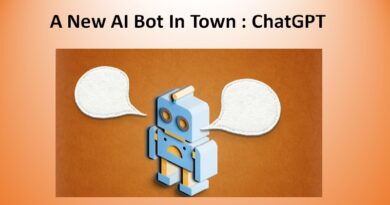Everyone has moved their data to the cloud now what?
Businesses of all shapes and sizes increasingly understand the need to continuously improve their competitive edge and avoid being left behind by the world’s digital FANGS. Early data companies like Google and Amazon leveraged data to dominate their markets. Additionally, the global pandemic has digital agendas, data, and agile decision-making for strategic priorities distributed across remote workspaces. In fact, a Gartner board study found that 69% of respondents said COVID19 has led their organization to accelerate data and digital business initiatives.
Moving data to the cloud is nothing new, but many people will find that migrating to the cloud won’t magically turn their business into the next Google or Amazon.
And most companies find that when they move, the newest cloud data warehouse, Lakehouse, Fabric or Mesh doesn’t help harness the power of their data. A recent TDWI Research study of 244 enterprises using cloud warehouses / data lakes found that 76% have experienced most or all of the same on-site challenges.
Cloud lakes or repositories only solve one problem by providing access to the data which, while necessary, does not address data usability and certainly not at scale (this gives FANG their “bytes”)!
Data usability is key to allowing digital businesses to truly leverage data and use it to hyper-personalize every product and service and create unique user experiences. unique to all customers.
The path to data usability
Using data is difficult. You have raw information filled with errors, duplicate information, inconsistent formatting, and the possibility of change, and different systems.
Moving data to the cloud only changes these issues. TDWI reports that 76% of companies confirm the same on-site challenges. They may have moved their data to one place, but they still face the same problems. Old wine, new bottle.
The ever-increasing bits of data must eventually be normalized, cleaned, aligned, and organized to be usable. And to ensure scalability and accuracy, this needs to be done automatically.
Only then can companies begin to uncover hidden gems, new business ideas, and interesting relationships in the data. This enables companies to gain a deeper, clearer and richer understanding of their customers, supply chains, and processes and convert them into monetization opportunities.
The goal is to establish a central intelligence unit, at the heart of which are monetized and easy-to-use data layers from which businesses can extract value on demand. This is easier said than done due to current barriers: implementing manual data preparation, acronyms, and complexity, especially because there is not enough talent, time or (appropriate) tools to do this. manage the scale required to prepare data for digital.
When an enterprise is not operating in “batch mode” and data scientists’ algorithms rely on constant access to data, how do existing data preparation solutions for running monthly process minimize it? Isn’t it the very promise of digital that every business operates anytime, anywhere, all-in-one?
Furthermore, very few organizations have enough data scientists to do so. QuantHub research shows that there are three times more data scientist jobs than job searches, leaving a current gap of 250,000 vacancies.
Faced with the parallel challenges of data scale and talent scarcity, companies need a radical new approach to achieving data usability. To use the auto analogy, just as BEVs revolutionized the way we get from point A to point B, advanced data usability systems will revolutionize the ability of every company. in making data usable to truly go digital.
Solving the usability puzzle with automation
Most see AI as the solution to the decision-making aspect of analytics, but FAANG’s biggest foray is using AI to automate data preparation, organization, and monetization.
AI should be applied to the critical tasks that need to be solved to make data usable to simplify, streamline, and optimize many of the functions needed to create, operate, and maintain data
can use.
Best approaches simplify this process into three steps: import, enrichment, and distribution. For ingesting, algorithms gather data from all sources and systems with speed and scale. Second, many of these dynamic bits are linked, assigned, and merged to allow for instantaneous use. This usable data must then be organized to enable flow and distribution between customer, business, and enterprise systems and processes.
Such a comprehensive, scalable and automated data usage system frees data scientists, subjectmatter experts and technology developers from tedious data preparation, manual and flimsy while providing flexibility and speed as business needs evolve.
Most importantly, it allows you to understand, use, and monetize every bit of data at sheer scale, allowing a digital business to compete with (or even beat) FAANG.
At the end of the day, that doesn’t mean cloud data warehouses, lakes, fabrics, or whatever is going to be the next big thing is bad. They settle for the inevitable purpose of easy access to data. But the journey to digital doesn’t end in the cloud. The usability of data at scale puts an organization on the path to becoming a truly data-driven digital business.




